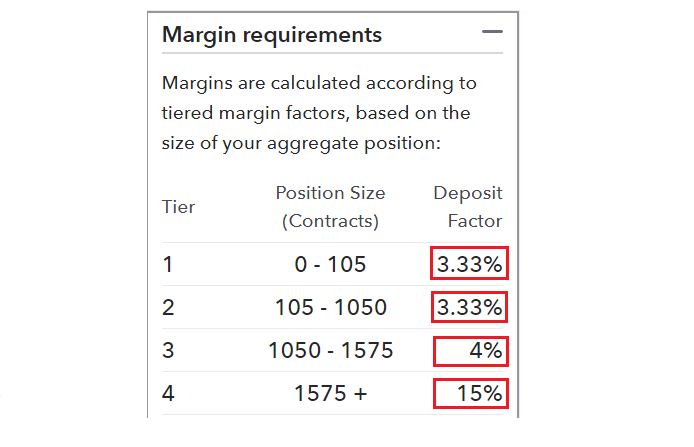

However, it is not a fee but a portion of account equity that is allocated as a margin deposit.Ī margin requirement is the leverage offered by a broker, and is usually updated at least once a month to account for market volatility or currency exchange rates. In the context of currency exchange, margin can be thought of as a good faith deposit required to maintain open positions, similar to a security deposit that is required for renting. This form of margin investing is highly risky, and investors (borrowers) should familiarize themselves with the risks first.

Keep in mind that initial margin requirements are different from maintenance margin requirements. Afterward, Federal Reserve Regulation T requires maintenance margin requirements of at least 25%, though brokerage firms generally require more. Regardless, federal regulations only allow investing borrowers to borrow up to 50% of the total cost of any purchase as the initial margin requirement. However, when the prices of these assets fall, the loss in value is much greater than the regular trading of assets. Usually, there is collateral involved, such as stocks or other financial assets of value.īuying stocks using borrowed money is known as "trading on margin." Margin trading tends to amplify gains and/or losses for instance, when the price of assets in an account rises, trading on margin allows investors to use leverage to increase their gains. Margin trading is the practice of using borrowed funds from brokers to trade financial assets this essentially means investing with borrowed money. For example, comparing the profit margins of a small family restaurant to that of a Fortune 500 chemical company would not yield particularly relevant results because of the differences in industry and scale. It is important that the companies being compared are fairly similar in terms of size and industry. Profit margin can also be compared to the performance of competing companies in order to determine relative performance as made transparent by industry standards. Secondly, the profit margin is a measure of efficiency, as it helps answer the question: how much profit is received for each dollar earned as revenue? For instance, a year that is off track with respect to typical profit margins in past years can be an indication of something wrong, such as the mismanagement of expenses relative to net sales. For starters, it is commonly used as a way to gauge the financial health of a business. Profit margin can be useful in several ways. For many businesses, this means either increasing the price of products or services or reducing the cost of goods sold. Generally, the higher the profit margin, the better, and the only way to improve it is by decreasing costs and/or increasing sales revenue. For instance, a 30% profit margin means there is $30 of net income for every $100 of revenue.

It can also be calculated as net income divided by revenue or net profit divided by sales. Profit margin is the amount by which revenue from sales exceeds costs in a business, usually expressed as a percentage. It can also refer to the amount of equity contributed by an investor as a percentage of the current market value of securities held in a margin account (related to the second and third calculation), or the portion of the interest rate on an adjustable-rate mortgage added to the adjustment-index rate. The first is that it can be the difference between a product or service's selling price and its cost of production (what is used by the first calculation), or it can be the ratio between a company's revenues and expenses. Financially, margin can refer to several specific things. The word "margin" has many different definitions within different contexts, such as referring to the edge or border of something or the amount by which an item falls short or surpasses another item. Amount Required: The amount required in your home currency to make the purchase.


 0 kommentar(er)
0 kommentar(er)
